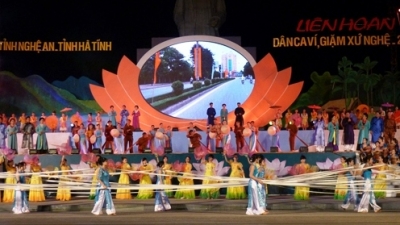An international conference was held in Vinh city, Nghe An province, seeking ways to safeguard and promote Vi and Giam singing, two types of traditional folk music practised in Nghe An and Ha Tinh provinces.

The event - which was held jointly by the Ministry of Culture, Sports and Tourism (MoCST) and the people’s committees of Nghe An and Ha Tinh provinces - was attended by around 60 researchers from Viet Nam and foreign countries including Russia, France, Belgium, Japan, China, Indonesia, Laos and the US. Also present were Vi and Giam artists from the two localities.
The 80 speeches delivered at the conference provided an objective evaluation of the historical and cultural value of traditional folk music and of Vi and Giam singing in particular.
The delegates also suggested practical solutions to safeguard and uphold folk music and to adapt Vi and Giam singing to modern society.
The discussions supplemented a dossier that is being compiled by the MoCST to seek UNESCO World Intangible Cultural Heritage recognition.
Earlier, the participants made fact-finding tours to Vi and Giam singing clubs in Thanh Chuong district, Nghe An province, and Phu Viet club in Thach Ha district, Ha Tinh province.
Vi and Giam folk singing play an important role in the cultural practices of the people in Nghe An and Ha Tinh provinces as the two forms have been preserved from generation to generation.
These forms of treasured cultural heritage feature vocalists singing in a call and response pattern.
Nghe An and Ha Tinh are currently home to 260 villages where locals still practice Vi and Giam. 75 singing clubs exist with more than 1,500 members in all.
These two types of folk music were honoured as national intangible cultural heritage by the MoCST in 2012.